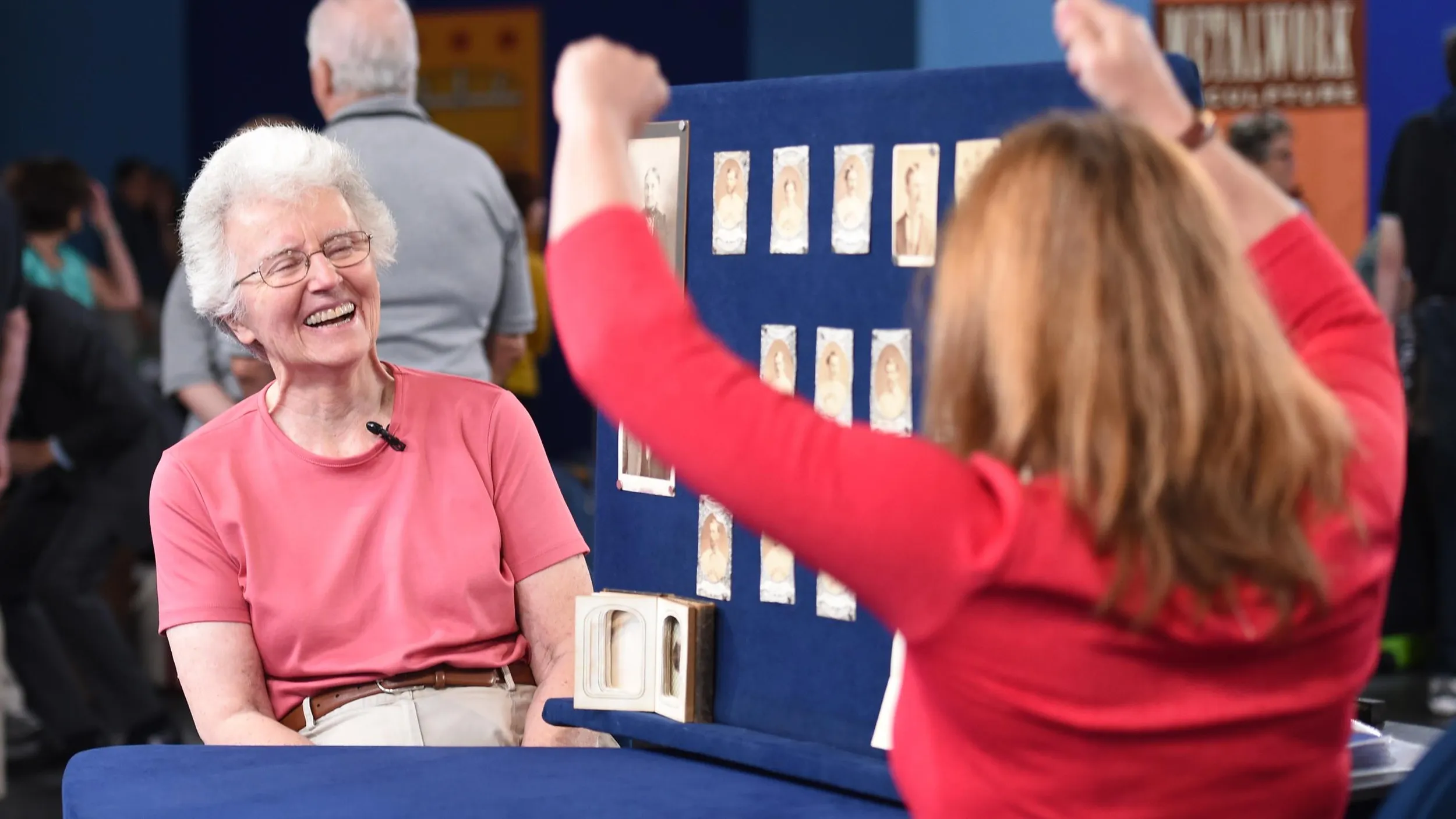GUEST: I was told it's Chinese and was brought over to Boston on a clipper ship.
APPRAISER: When did they say it came over?
GUEST: I would think it was around the 1860s.
APPRAISER: Okay.
GUEST: And my mother bought it from the daughter of the ship captain.
APPRAISER: The first most obvious aspect of this is the size.
GUEST: Yes.
APPRAISER: It's very large.
GUEST: Yes.
APPRAISER: And the other part of it that's really obvious is that it is made in sections, including the handles, which are removable. You have scenes that often look back to nature. So if you look up here at the top, you can see the waterfowl, grasses, and it's beneath a Greek key kind of border and this lower lappet border, which is what this is called, which is incorporating stylized cloud designs, but is also reminiscent of what we would call Gothic revival here in the West. So there's a little bit of reference to Western design in addition to Asian design. And then we've got this animal. This is in Japan called a Kirin and in China it's called a Qilin, and it's this animal that incorporates other types of animals' body parts. It's a mythological creature. And as we go down, then we see here in flight a phoenix.
GUEST: Mm-hmm.
APPRAISER: Symbol of rebirth and longevity. And here, we've got a little crab among sea creatures and a carp. And then here at the bottom, this is one of the clues: a whole series of turtles, tortoises emerging from waves, and that's a particularly Japanese motif. It's not Chinese, but it's incorporating Chinese elements, which is why people in your family thought it might be Chinese. This actually was an incense burner. It's a censer. Now, all these motifs are emblematic one way or another of good luck, positive symbolism. It was made purposely for sale here in the West, usually made in pairs. My guess is that it would have been made in the 1870s, and in Japan, we have the Meiji period beginning in 1868 and ending in 1912, which is a period of industrial revolution in Japan. What did your mother pay for this?
GUEST: I would guess, because my mother didn't spend a lot of money on things, that it was not much more than $100. Now, we're talking about the early 1940s was when she bought it.
APPRAISER: In an auction sale, this today, because it's a single item and the Japanese market's a little depressed, today, I would say that it would be expected to make between $10,000 and $15,000. That's at auction.
GUEST: Okay, and insurance?
APPRAISER: Probably more in the $20,000 range would be appropriate.
GUEST: Okay, that sounds good to me.








